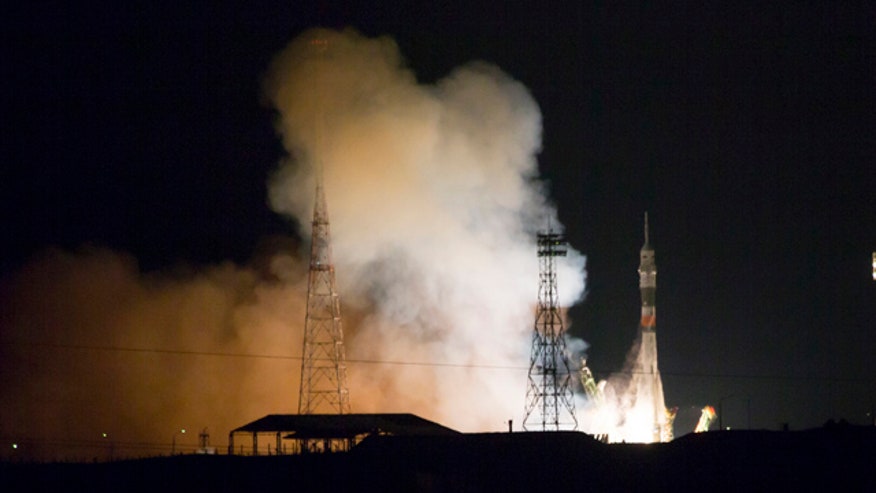New crew arrives at International Space Station
 |
| November 24, 2014: The Soyuz-FG rocket booster with Soyuz TMA-15M space ship carrying a new crew to the International Space Station, ISS, blasts off at the Russian leased Baikonur cosmodrome, Kazakhstan. (AP Photo/Dmitry Lovetsky) |
The Russian capsule roared into the pre-dawn darkness just after 3 a.m. Monday (4:00 p.m. EST Sunday) from the Baikonur Cosmodrome with Russian Anton Shkaplerov, NASA's Terry Virts and European Space Agency astronaut Samantha Cristoforetti of Italy aboard.
The craft docked with the space station after a trip lasting five hours and 48 minutes, which the NASA television commentator noted was roughly the time it takes to drive from NASA headquarters in Houston, Texas, to New Orleans, Louisiana.
The three astronauts join three others already aboard the orbiting station, including Russian Elena Serova. Cristoforetti's arrival made it the second time in the station's 16-year history that two women have been aboard on long-term missions.
Shkaplerov, Virts and Cristoforetti will remain aboard the station until mid-May. The current crew of NASA's Barry Wilmore, Russian Alexander Samokutyaev and Serova will return to Earth in early March.
Since the retirement of the U.S. space shuttle fleet in 2011, Russian Soyuz spacecraft have served as the only means to ferry crew to and from the space outpost.


No comments:
Post a Comment